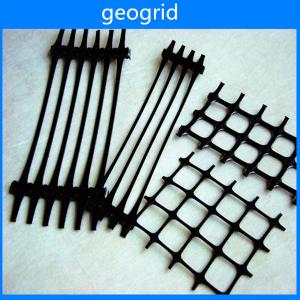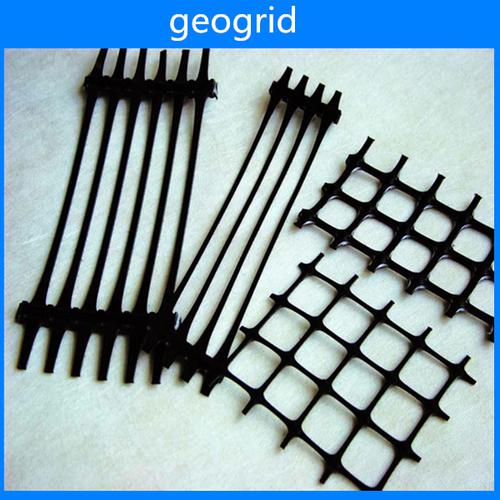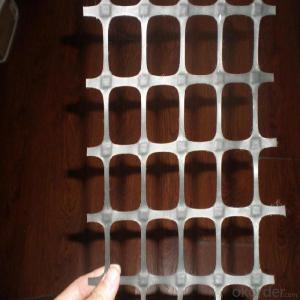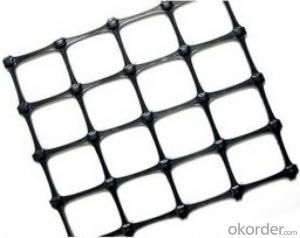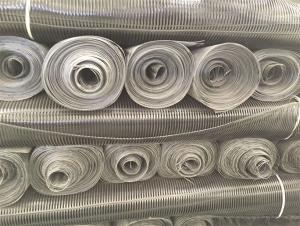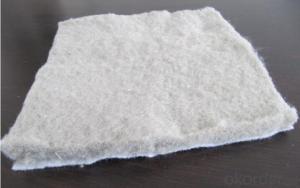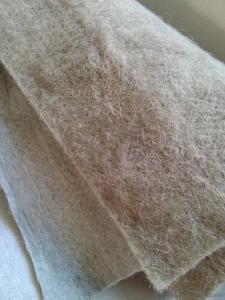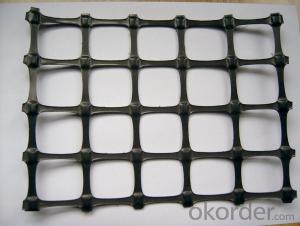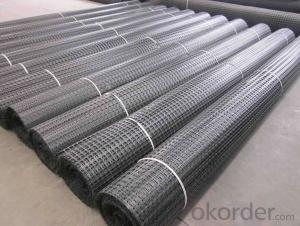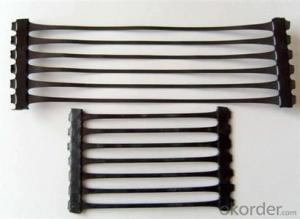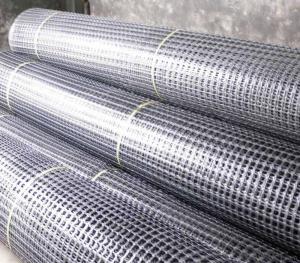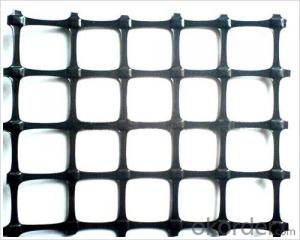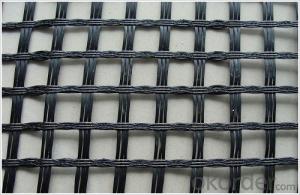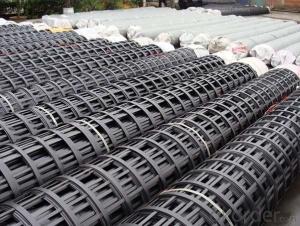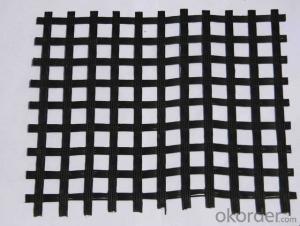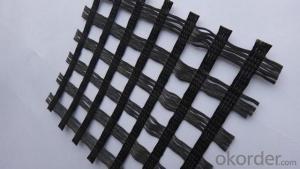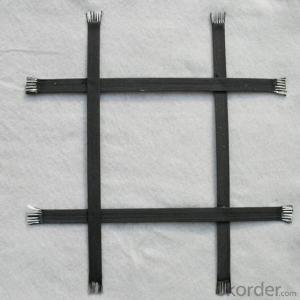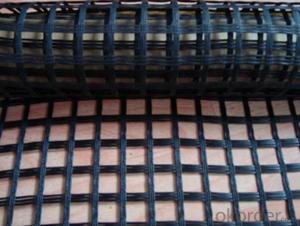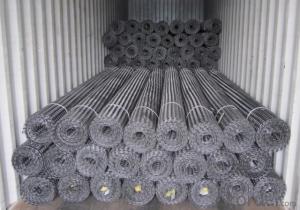Plastic Geogrids for Geogrids and Soil Stabilisation Materials
OKorder Service Pledge
OKorder Financial Service
You Might Also Like
Item:PP Uniaxal geogird
1.Material:PP
2.Tensiel strength:30KN/M
3.Size:2.5m*50M
4. Elongation:10%
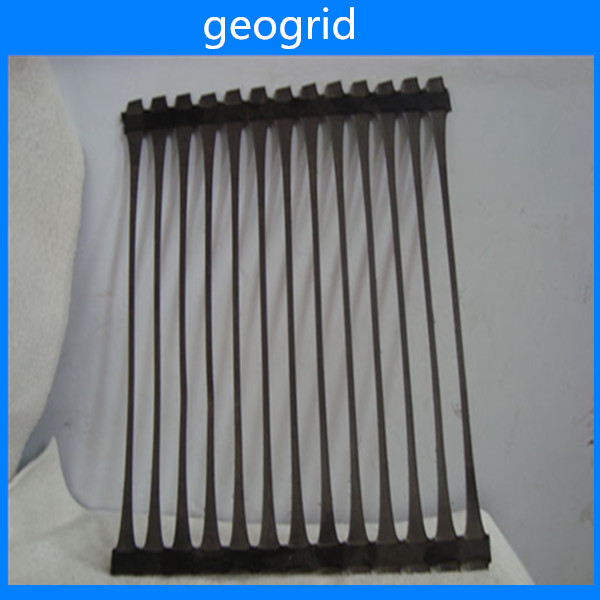
Uniaxial geogrid ,made of high molecular polymer ,is extruded into sheet and then punched into regular mesh patten,and finally stretched in the longitudinal direction.
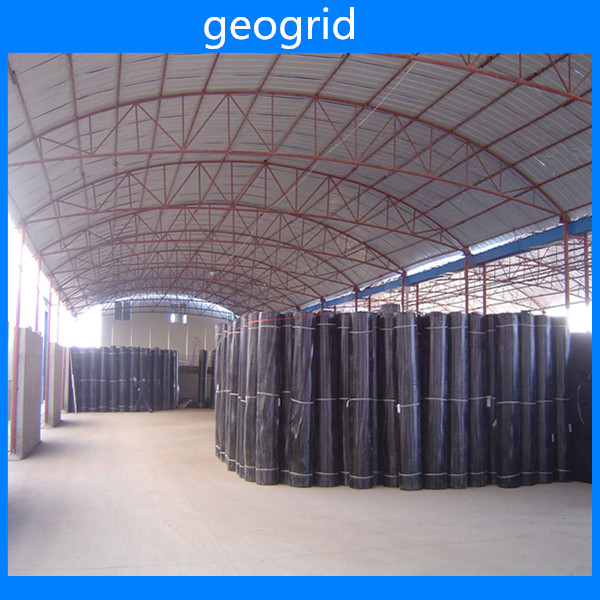
Feature:
With high tensile strength and tensile modulus
Function:
Uniaxial goegrid is mainly applied in highway,railway,slope protecting projects,retaining wall,dam to strengthen land loading capacity and extend its service life.Features in reducing area,project cost and matentainence cost,convenient to construct.
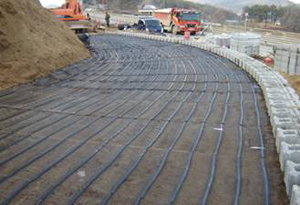
- Q: Bi directional plastic geogrid is suitable for engineering
- Slope protection, wall reinforcement, large airport, parking lot
- Q: Are there any limitations or drawbacks of using geogrids?
- Yes, there are limitations and drawbacks to using geogrids. Some of the limitations include the need for proper installation and compaction to achieve desired performance, as well as the requirement for an appropriate soil structure to effectively interlock with the geogrid. Additionally, geogrids may not be suitable for certain soil types, such as highly compressible or expansive soils. Other drawbacks include potential damage during installation, high cost compared to conventional soil reinforcement methods, and potential long-term degradation due to environmental factors.
- Q: What are the specifications of fiberglass geogrid for Asphalt Pavement
- 50KN is a relatively large number of glass fiber, of course, also depends on the road re design of the standard is to determine what the specifications,
- Q: Are geogrids suitable for stabilizing soft soils?
- Yes, geogrids are suitable for stabilizing soft soils. Geogrids are commonly used in civil engineering projects to reinforce and stabilize soft soils by distributing the load more evenly and increasing their bearing capacity. They provide tensile strength to the soil, preventing excessive deformation and potential failure. Additionally, geogrids can improve the overall stability of the soil, reducing the risk of settlement or differential settlement.
- Q: How do geogrids enhance the performance of geosynthetic clay liner erosion control blankets?
- Geogrids enhance the performance of geosynthetic clay liner erosion control blankets by providing additional reinforcement and stability to the liner. They help distribute loads, reduce soil movement, and improve the overall performance of the erosion control system.
- Q: What are the differences between geogrids and geotubes?
- Geogrids and geotubes are both used in geotechnical engineering, but they serve different purposes. Geogrids are typically used for soil stabilization and reinforcement, where they are placed within the soil to distribute loads and improve the overall strength of the structure. On the other hand, geotubes are large, cylindrical containers made of geotextile fabric, filled with sand or other materials, and used for shoreline protection, erosion control, and dewatering. While both geogrids and geotubes are beneficial in their respective applications, their differences lie in their form, function, and the specific challenges they address.
- Q: Where can I do three to the geogrid test?
- Currently did not find the corresponding three geogrid test specification, how to determine the direction of the three cells, how to load are not standardized
- Q: How do geogrids improve soil stabilization?
- Geogrids improve soil stabilization by providing a reinforced framework that helps distribute the applied loads more evenly, reducing soil movement and improving overall stability. Additionally, they enhance the soil's resistance to lateral spreading, prevent erosion, and increase the bearing capacity of the soil, making it suitable for various construction and engineering projects.
- Q: Can geogrids be used in erosion control applications on steep slopes?
- Yes, geogrids can be used in erosion control applications on steep slopes. Geogrids are often used to reinforce soil and prevent erosion by providing stability and support to the slope. They can effectively distribute loads and reduce the risk of slope failure, making them suitable for erosion control on steep slopes.
- Q: How long do geogrids typically last?
- Geogrids typically have a lifespan ranging from 20 to 75 years, depending on various factors such as the quality of the material, environmental conditions, and the level of stress they are subjected to.
Send your message to us
Plastic Geogrids for Geogrids and Soil Stabilisation Materials
OKorder Service Pledge
OKorder Financial Service
Similar products
Hot products
Hot Searches
Related keywords
